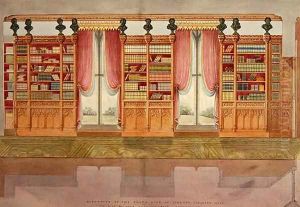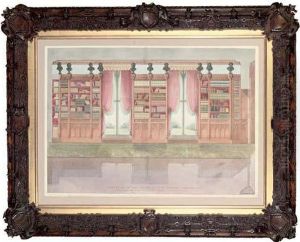Lewis Nockalls Cottingham Paintings
Lewis Nockalls Cottingham was a prominent British architect and a pioneer in the Gothic Revival movement. Born on May 24, 1787, in Loddon, Norfolk, England, Cottingham developed an early interest in medieval architecture, which greatly influenced his later work. He is best known for his efforts in the restoration of Gothic buildings, which was a relatively novel concept in his time. His work was significant in the context of the early 19th century, when the appreciation for medieval Gothic architecture was just beginning to take hold in Britain.
Cottingham received his education in architecture under the tutelage of several architects, including Thomas Hardwick, who was a classicist. Despite this classical training, Cottingham's passion lay with the Gothic, and he set up his own practice in 1814. Over the years, he became known for his restorative work and was involved in the restoration of several medieval buildings, including the Leeds Castle in Kent and the Tattershall Castle in Lincolnshire. He also took part in the restoration of Westminster Hall and the Palace of Westminster after the destructive fire of 1834.
Aside from restoration, Cottingham also designed new buildings, such as St James's Palace and the country house Stoke Rochford Hall, both of which showed his commitment to Gothic design principles. He was also an avid collector of medieval artifacts and made significant contributions to the study of Gothic architecture through his detailed drawings and scholarly works.
Lewis Nockalls Cottingham's impact on the Gothic Revival movement was profound, as he helped set the stage for later architects, such as Augustus Pugin, who would take the movement to greater heights. Cottingham's dedication to the preservation and restoration of Gothic architecture helped to ensure that many of England's historic buildings were not only saved from decay but also appreciated for their artistic and cultural significance.
Cottingham died on October 13, 1847, in London. Today, he is remembered as a significant figure in the field of architectural conservation and as one of the early advocates for the Gothic Revival in England. His legacy endures in the many structures that he helped to preserve and in the broader recognition and appreciation of Gothic architecture that emerged following his era.

